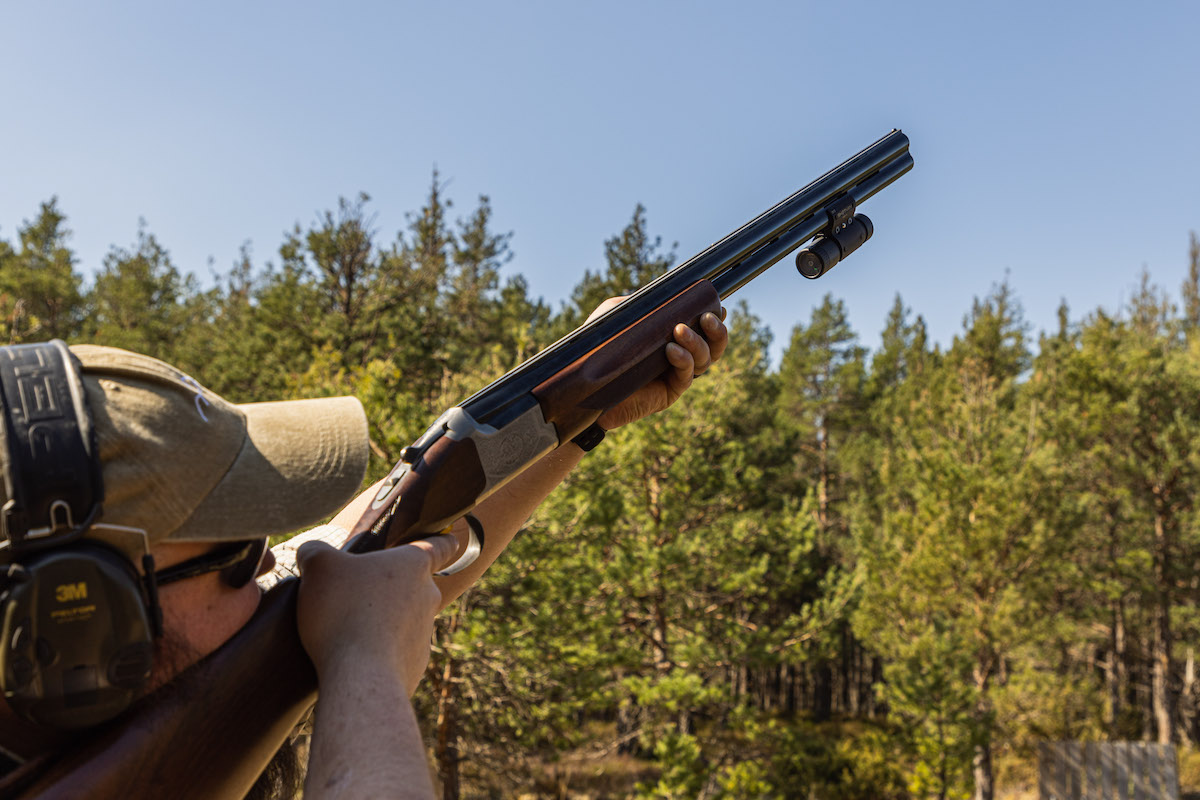David Lloyd Rifle
This instantly recognisable rifle with a unique scope-mounting system was built to last, writes Bruce Potts

David Lloyd Rifle
Manufacturer: David Lloyd
If any single rifle in the stalking world was instantly recognisable, rather like an E-Type Jaguar, this one stands out instantly. Its design was far ahead of its time. It was the brainchild of David Lloyd, who was born in 1910 in Northamptonshire. A keen deerstalker and riflemaker, he had a huge knowledge of ballistics and metallurgy. In 1936 he formed David Lloyd & Co and became a real character and influence among rifle shooters, here in the UK and abroad.
Lloyd wanted to build the strongest rifle capable of being handled roughly in any climate and terrain while remaining zeroed with a scope. He designed and patented a unique scope-mounting system that is at the heart of the rifle — everything else is built around it.
Lloyd rifles were designed to stay zeroed once set and were available in high-velocity flat-shooting cartridges such as the .244 Holland & Holland, which he designed, the .264 Win Mag and 7mm Rem Mag, to name the most common.
 Action and bolt
Action and bolt
I stumbled across this particular David Lloyd rifle at Francis Lovell’s gunshop in Witney, in Oxfordshire. It is in 7mm Rem Mag and engraved “David Lloyd Pipewell”, which refers to Lloyd’s ancestral home, Pipewell Hall, in Northamptonshire.
Once voted the eighth-best rifle of all time by Shooting Times, the Lloyd uses a Mauser 98 action, which provides a strong and traditional action. Military actions were converted to sporter trim and redesigned to take Lloyd’s cartridges. The bolt handle was re-profiled to a dog-leg design and handled well.
This Lloyd has a magnum bolt face. The bolt is jewelled, as is the bolt release, and the trigger is honed for a smoother let-off. The floorplate has been highly polished and sealed for a nice contrast with the blued barrel.
On top of this is the amazing scope-mounting system. It is a cocoon that cradles the front and rear ends of the sight that is solidly mounted to the action. It purposely uses high-end scopes — such as Zeiss, Swarovski, Habicht and Hensoldt — of only 4x or 6x power so the smaller objective lens sits low to the barrel.
All elevation and windage turrets are removed, and David Lloyd zeroed each rifle on his personal range to a certain load as the customer required. A cover then replaced the turrets and the zero was set. Windage could be adjusted via a sliding rear mount but once set it was bombproof.
Stock and barrels
The next visual treat is the woodwork. This rifle has a lovely piece of French walnut in a deep rich colour and nice grain. Typical of Lloyd’s design ethos, the stock looks racy with a slimline fore-end and raised cheekpiece, ventilated recoil pad and deeply scalloped recess to allow fast cartridge loading and extraction.
The barrels are long and slimlined too, and very well blued in the traditional way. They’re also 28in long to take advantage of high-velocity rounds. Despite its length, the rifle handles extremely well. It was made so you could carry it all day out on the hill and be able to take shots across the glen with total confidence.
David Lloyd died in 1996, and in 2006 Ronald Wharton bought the company and now produces a redesigned mount to suit newer scopes such as the Swarovski 1.7-10×42 and complete M2000 Lloyd rifles.
I shot my first David Lloyd at the 1981 British Deer Society deer management course at Stockbridge. Like the model shown here, it too was a 7mm Rem Mag and it left a long-lasting impression on me as a teenager.
What you need to know
Barrel: Cartridges such as the .244 Holland&Holland, .264 Win Mag and 7mm Rem Mag are hard on barrels but good on performance
Action: The polished floorplate is preferred; but check there’s no binding when cycling the action
Weight: 8lb
Length: 47.5in
Features: A lovely sturdy scope-mounting system
Supplier: Francis Lovell
Prices: Available second-hand from £1650









